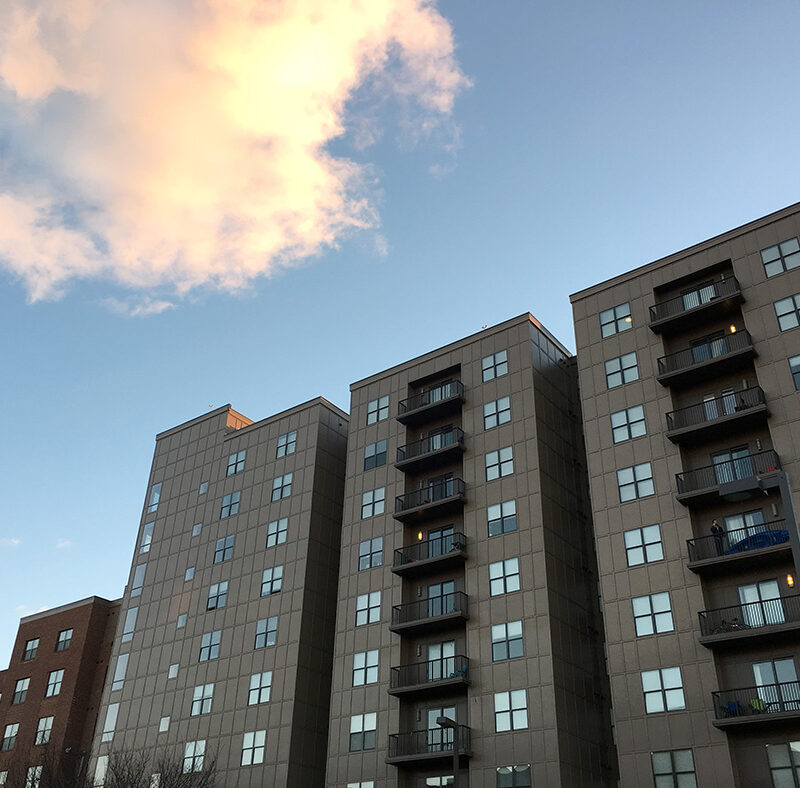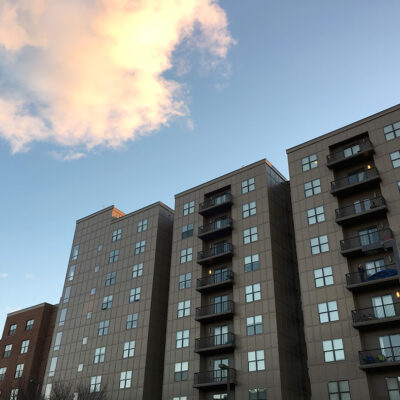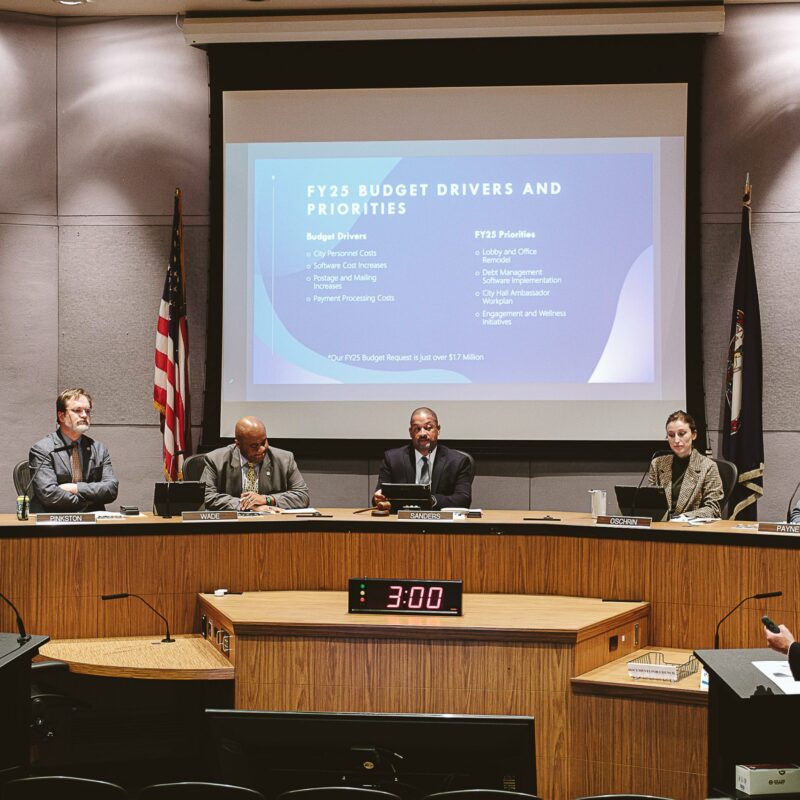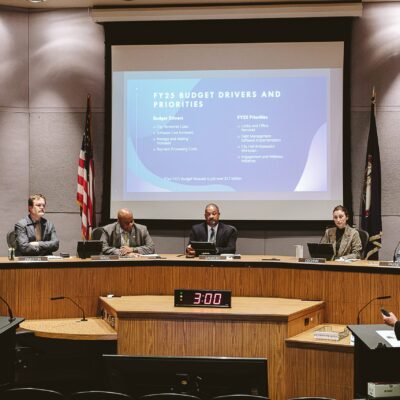|
This image from the 2004 McIntire Park Master Plan shows how McIntire Park East could be used as a community open space and a transportation anchor connecting the Meadowcreek corridor to Schenk’s Greenway and Downtown. (Courtesy Charlottesville Parks and Recreation) |
New York’s Central Park. The Boston Common. Hyde Park in London. These world class parks are renowned for being accessible city landmarks that bring tourists and locals together.
The planning of McIntire Park East, the 61-acre open space at the intersection of McIntire Road and the 250 Bypass, is at a stalemate, and the park may never reach its full potential at this rate.
Charlottesville has won several awards as a city, including No. 1 Best City to live in the USA and Canada from Cities Ranked & Rated, and The Atlantic recently named Charlottesville one of the “happiest, healthiest” towns in the country. Like former mayor and urban designer Maurice Cox, who oversaw the last Master Plan for McIntire Park in 2004, said, we don’t live in a “third rate city,” so why should we build a third rate park?
“It pains me to see us lower our expectations for excellence and just make do,” Cox said, “when we also have aspirations to be a world class small city.”
Architect and City Councilor Kathy Galvin said that Council has received e-mails from residents strongly suggesting that the park be “designed by a nationally recognized landscape architectural firm.”
Cox agreed, stating “there is no way in the world that this is going to be a world class park without a world class landscape architect designing it.”
But what about the Master Plan that the city retained Will Rieley to design in 2004? Cox described the plan as having been “put together artfully,” with a park including an arboretum, a Vietnam memorial, and a recreational lake.
“Exactly why the city did not assume that that was a starting point escapes me,” Cox said, “but I think that sometimes the loss of institutional memory is the problem.”
According to City Councilor Dave Norris, the 2004 Master Plan has “certainly informed and influenced much of the succeeding discussion.”
When Land Planning and Design Associates presented three design options early this year, Galvin expressed her concern that the process so far had “led to something that wasn’t quite the full picture.”
“That’s when it was discovered that the consultant being used didn’t know how to design,” Galvin said. “They did have experience with golf courses, but they didn’t have anybody on staff that knew how to put together botanical gardens or natural areas.”
Galvin said that the plans were reconfigured to include an option with dominant use of a botanical garden, which was revealed at another public hearing.
Two stakeholder groups have dominated the public hearings, one group advocating for golf and the First Tee program, and the other pushing for a botanical garden.
According to an e-mail correspondence between Cox and Parks and Recreation Director Brian Daly, the city has “engaged with Land Planning and Design Associates and brought them in early in the process.”
At the February 28 meeting, 19-year-old Dominique Morris spoke “for golfers who are working late tonight and can’t make the meeting.” He reminded the audience that the golf course has been home to the First Tee program, and has provided a safe, affordable place for kids of all ages to learn how to play golf. “This allows us to be us, allows us to have fun,” he said. “Some part of this park has to be affordable to golfers.”
The audience was also given numbers regarding current usage of the park. In 2011, about 18,000 people came through the park, and 3,143 of those visitors paid for rounds of golf. About 2,100 of those rounds were with the First Tee program.
In response to the question “Why can’t First Tee be moved to Pen Park?” Wayne Hall, chair of the First Tee Advisory Board, said that there would not be enough room for all 400 children.
Pen Park’s golf course is more than double the size of McIntire Park, at 155 acres and 18 holes, with 32,498 round played in 2011, and is already home to a chapter of the program. According to Galvin, the First Tee program has been utilizing McIntire Park since 2010.
When a group originally came forward with a request for a botanical garden, Parks and Rec began looking into plans for construction and funding. But according to Chris Gensic, the city’s trail planner, the same group later came back saying that they didn’t actually want a botanical garden in the true sense of the term—they just wanted a big open area where they can walk a dog, go for a run, enjoy nature. And later at a public hearing, the same group requested that the golf course be eliminated from the plans entirely.
Robin Hayes spoke at the meeting on behalf of the botanical garden supporters, emphasizing the importance of a trail system throughout the park for walkers, runners and bicyclists. She noted the already overcrowded trails at parks like Riverview, and that “that just shows the real interest in this town.”
Public hearings sound great in theory—but how effective are they when the same people show up to make the same arguments week after week?
“That’s the kind of engagement that leads to mediocrity,” said Cox.
With his experience both on City Council and as an urban developer, Cox explained how important it is to begin with high aspirations and a robust initial vision. The tug-of-war of public process takes its toll, and over time it can dumb down the original idea to something mediocre.
“If you don’t have the components of an extraordinary design or vision, and people start at it, when they finish, it’s nothing,” he said.
Large signs with a phone number and e-mail address for public comments and suggestions are posted around the park, and the meetings have been advertised on the Parks and Rec website. The next public hearing is at 6pm on Monday, March 26, at Buford Middle School.
According to Galvin, the process will then fall into the hands of City Council, which will discuss the options in accordance with the soon-to-be finalized budget.
Gensic would love to see the park accommodate everybody’s wants and needs, but he struggles to understand exactly what those are, and wants to ask the public “can you please clarify what you want before we move forward?”
Current numbers regarding the specific demographics of park usage are not available, but if the February 28 public hearing is indicative of previous and future meetings, the majority of residents with a vested interest in the park are over the age of 55.
So if children, college students, young professionals and working parents are to have a voice in the process, the city may need to think outside the box to get their input.
“You can advertise your meetings and say ‘come to us,’” said Cox. “Or you can go to them.”
Going to them could entail collaborating with PTOs to reach parents, and even “taking the process into the classroom,” opening up discussion to students and broadening the spectrum of input.
Cox compared this process to that of the Belmont Bridge, and said that he would love to see the city utilize students and faculty in the landscaping department at UVA.
Who knows—maybe a McIntire Park design contest is around the corner.
/mcintire_plan.jpg)





